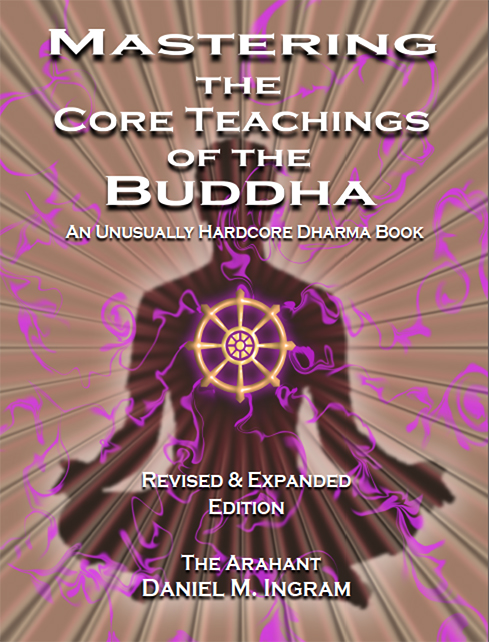25. Introduction to Part Three
← Part III: The Samatha Jhanas | 26. The Wide World of Jhana →
To me, the word jhana (a Pali word that literally has two basic meanings, “to contemplate”, and “to burn up”, as in to burn up unskillful states of mind) refers to a whole mode of attention, a whole broad package of mental aspects and possibilities that are vastly more essential than they are typically considered to be. Traditionally, there are said to be eight jhanas. They are called simply the first through the eighth jhanas. The first four are called “formed jhanas”, largely to differentiate them from the last four jhanas, called the “formless jhanas”. The “formless jhanas” are states that take rarified experiences, such as Boundless Space, as their object of attention. It can also be useful to split the eight jhanas into subparts, as each one develops in a predictable fashion in sub-stages, and these can be useful to the technical practitioner when exploring various modes and aspects of attention and the vast range of experiences that we can access in the jhanas.
The eight-jhana classification system, while elegant in its simplicity, also requires a lot of qualifiers to be able to handle anything like the vast range of possible meditative or jhanic experiences. I will attempt to add some of those qualifiers here, realizing that this is an elaboration of the older system; an upgrade, if you will. The additional terminology comes from a number of sources, the most important of which is the work of the late Bill Hamilton. Bill was kind enough to teach me his broader, deeper, more sophisticated and nuanced approach to describing meditative experience using the jhana framework.
Bill’s system looks at fundamental aspects of the jhanas as well as how those might be noted in a huge range of experiences that span various objects, degrees of concentration, practitioners, and styles of practice. I am extremely grateful to Bill for teaching me this system, as it opened worlds of possibility in terms of meditative development and has made it much easier to get a sense of what is going on with my own or others’ practice. It has also allowed the use of much ancient meditation theory to attain great insights and stages of concentration in contemporary practice. I am deeply grateful to all the teachers and practitioners who have contributed to this body of literature and practice technology.
From my point of view, the jhanas are more fundamental modes of attention than the stages of insight or the concentration states. They are core aspects of our attentional anatomy, a description of something basic about the nature of a specifically tuned mind. This second edition of the book will use the jhanas as the fundamental framework for discussing the stages of mastery to a greater degree than the original version did. Hopefully this will solve a host of problems in the first edition. I received many excellent questions about specifics that I later realized I had not made very clear, and hopefully this structural adjustment will serve to address at least some of those questions. It is also much closer to the way I think about practice and jhanas, though it will appear to some readers to diverge from orthodoxy even more than the first edition did.
There are more finely grained frameworks that we can use to parse some of the more intricate aspects of the experiences we can run into, such as the stages of insight detailed later, but for our purposes, there is lots to be said for the jhana terminology. The jhanas describe how attention develops, and are broadly applicable to any human developing concentration in any meditative tradition, sort of like embryology describes the development of a baby in the womb. The jhanas are very predictable stages that nearly all practitioners go through as they develop concentration.
Some may find the fine slicing of jhanic experiences into subparts and sub-subparts completely off-putting. It is an understandable reaction. If that aspect of this section is not useful at this stage in your practice, ignore it and read on. However, one day it might be useful to realize it is there, should you ever suddenly think to yourself, “Wait! I am seeing that stuff clearly now! Wow!” It is entirely possible that, should you practice well, you may one day come to appreciate the elegance and power of this system. Until then, focus on the more basic elements, as they will take you a long way. I advanced pretty far in my practice before I learned about these deeper elements, and they would have made no sense to me initially.
← Part III: The Samatha Jhanas | 26. The Wide World of Jhana →

